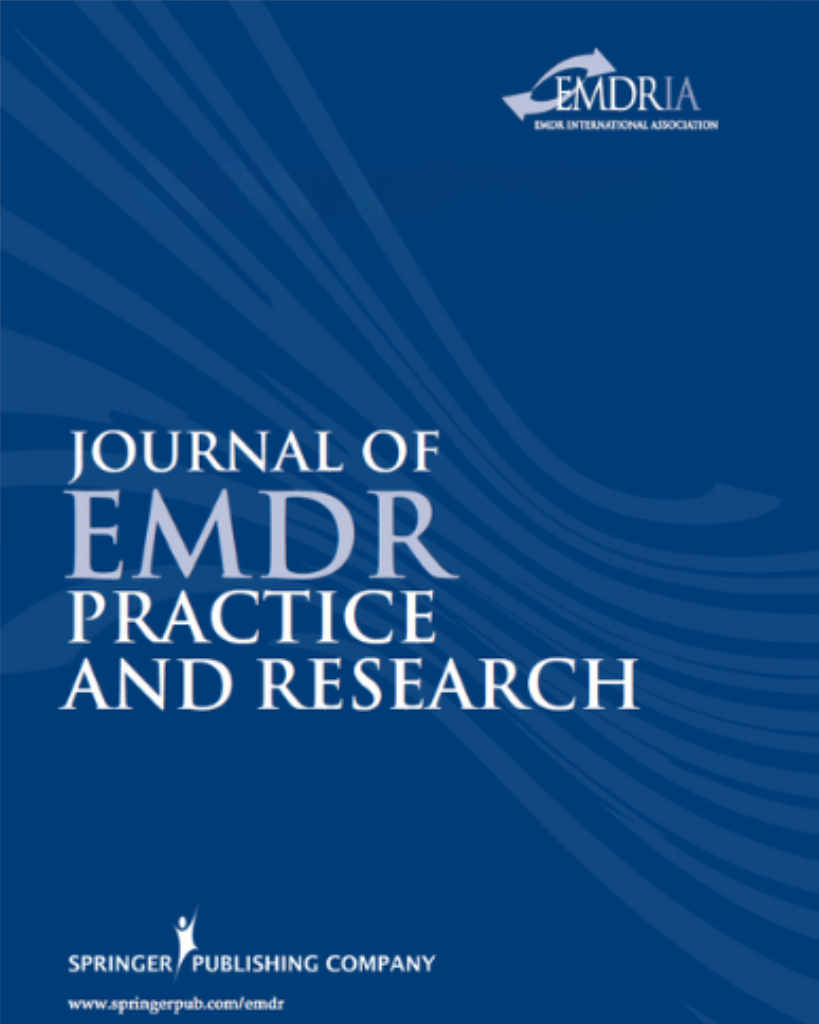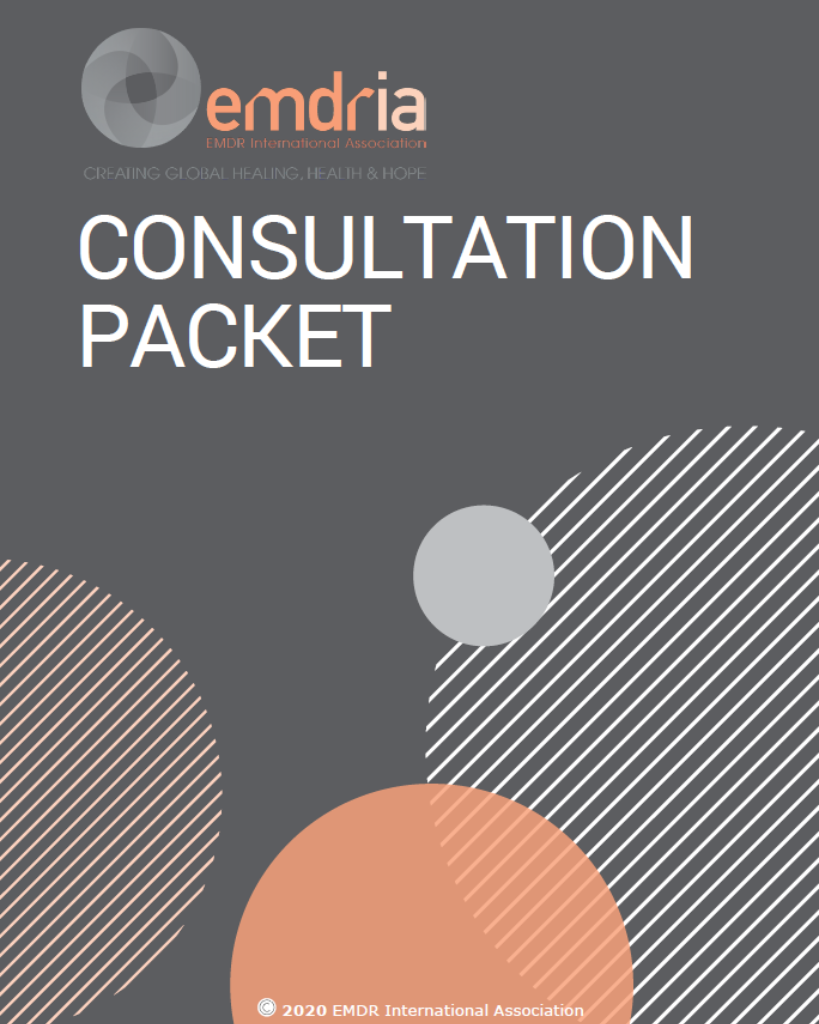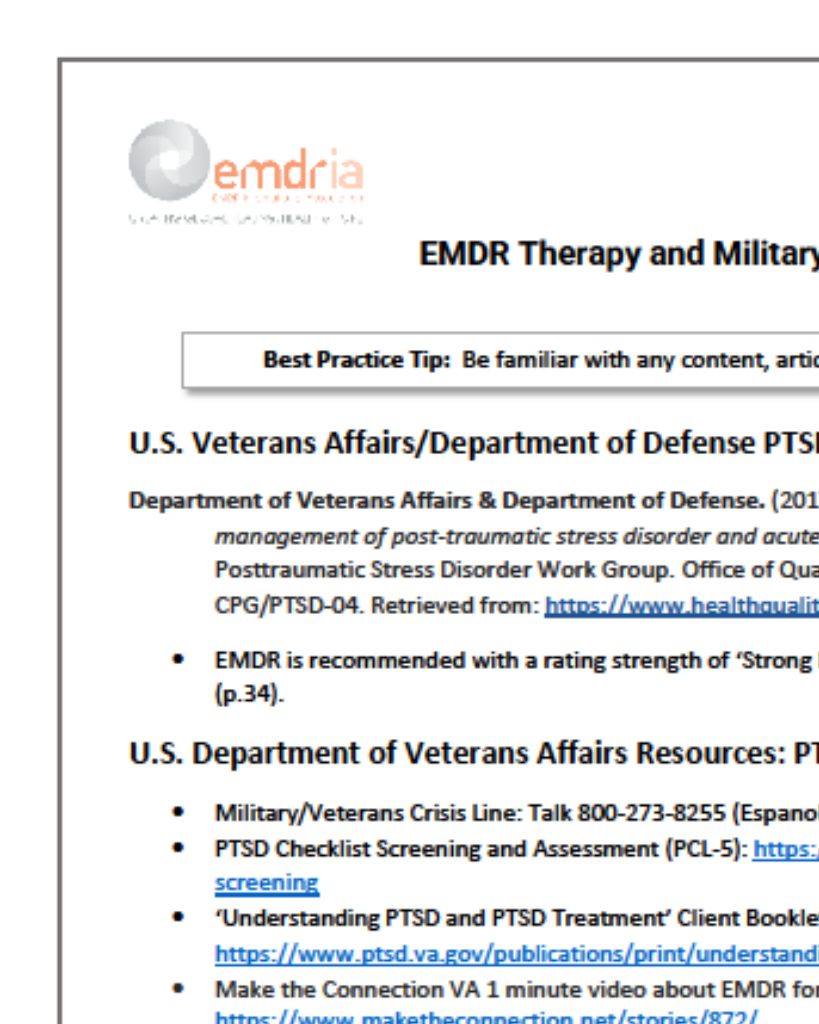Adaptive Information Processing, Targeting, the Standard Protocol, and Strategies for Successful Outcomes in EMDR Reprocessing
Excerpts from “An EMDR Primer: From Practicum to Practice” (Hensley, 2009) to help new clinicians and to serve as a refresher.
Article Abstract
“This article provides excerpts from each chapter of An EMDR Primer: From Practicum to Practice (Hensley, 2009) to assist novice eye movement desensitization and reprocessing (EMDR) clinicians who are learning how to use this approach and to serve as a refresher for therapists who have not used EMDR consistently in their practices. Actual cases are presented that demonstrate various strategies that the therapist can use to help clients reach adaptive resolution of trauma. Tables and figures highlight important features to explain the obvious and subtle nuances of EMDR. Focal points are the following: (a) the adaptive information processing model; (b) the types of targets accessed during the EMDR process; (c) the 8 phases of EMDR; (d) the components of the standard EMDR protocol used during the assessment phase; (e) past, present, and future in terms of appropriate targeting and successful outcomes; and (f) strategies and techniques for dealing with challenging clients, high levels of abreaction, and blocked processing.”
—Description from publisher
Article Access
Open Access
Hensley, B. J. (2012). Adaptive Information Processing, Targeting, the Standard Protocol, and Strategies for Successful Outcomes in EMDR Reprocessing. Journal of EMDR Practice and Research, 6(3), 92–100. https://doi.org/10.1891/1933-3196.6.3.92
About the Journal
The Journal of EMDR Practice and Research is a peer-reviewed publication devoted to integrative, state-of-the-art papers about Eye Movement Desensitization and Reprocessing. It is a broadly conceived interdisciplinary journal that stimulates and communicates research and theory about EMDR, and their application to clinical practice. The Journal of EMDR Practice and Research is the Official Publication of the EMDR International Association.
Date
September 1, 2012
Creator(s)
Barbara J. Hensley
Practice & Methods
AIP, Protocols
Extent
9 pages
Publisher
Springer Publishing Company
Rights
Copyright © 2012 EMDR International Association
APA Citation
Hensley, B. J. (2012). Adaptive Information Processing, Targeting, the Standard Protocol, and Strategies for Successful Outcomes in EMDR Reprocessing. Journal of EMDR Practice and Research, 6(3), 92–100. https://doi.org/10.1891/1933-3196.6.3.92
Series
6
Installment
3
Audience
EMDR Therapists
Language
English
Content Type
Peer-Reviewed
Original Source
Journal of EMDR Practice and Research
Access Type
Open Access





